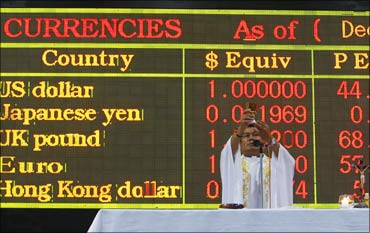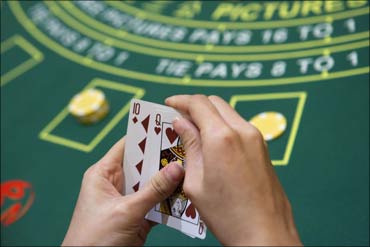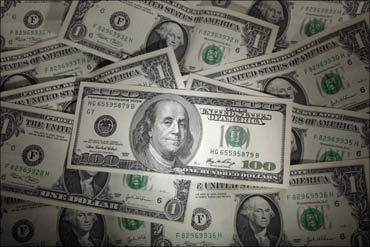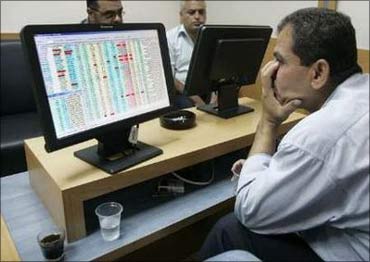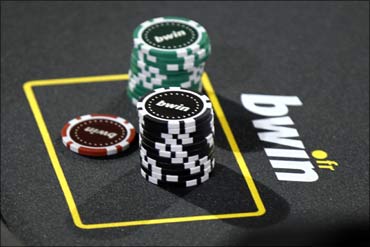 | « Back to article | Print this article |
Why currency derivatives are like rigged casinos!
Part-I: The mysterious case of the missing $500 billion!
This is the second part of a 3-part series on exotic financial derivatives, how they wreaked havoc globally, and why global financial institutions seem to resemble rigged casinos.
Common sense is commonly uncommon
The IMF Paper on the damages caused by currency derivatives authored by Randall Dodd has now spawned a serious debate across continents.
As already pointed out in the first past to this three-part series, the loss for business entities is estimated to be in excess of $500 billion with the corresponding gains suspected to accrue to global banks.
Anecdotal evidence available with us suggests a clear pattern to the entire game. The moot point that remains for greater examination is: Is this merely a co-incidence or is there something more to it than meets the eye?
To unravel this issue, a reference to fundamentals of business management, crucially risk management in a business entity, is inevitable. Risks to a business entity center on currency volatility, interest rate fluctuations or credits default risks. The core of the derivatives game is to neutralise these risks.
Unfortunately, normal human mind refuses to comprehend the entire gamut of risks and hence is unable to quantify risks. Enter the financial specialists -- who not only map, quantify and mitigate risks but also reduce risks by using complex mathematic models through computers (of course) into simple numbers.
Click NEXT to read on . . .
Why currency derivatives are like rigged casinos!
Normal curves are usually abnormal
Models are in turn based on past statistics. And one of the most important tools used in the financial world is the 'normal distribution curve' that lies at the centre of modern finance, especially risk mapping, explanation and management.
Noted derivative expert Satyajit Das tells us that "there is nothing normal about it."
The normal distribution curve explains why there is a 67 per cent chance that any observation in any sample size of the population will be plus or minus one standard deviation of the mean, 95 per cent chance that it will be within two standard deviation of the mean and 99 per cent chance that it will be within three standard deviation of the mean.
Most financial models are based on such statistical tools -- of course, made increasingly convoluted through human ingenuity.
'Analysts' tell us as a matter of fact that the balance 1 per cent can be ignored. "There is a 1 per cent chance that your flight may crash or there could be an earthquake tomorrow," they tell their gullible audience.
Click NEXT to read on . . .
Why currency derivatives are like rigged casinos!
Even a lamb to the slaughter would seem to be much smarter than those bamboozled by financial models explained by such specialists.
It is such statistical analysis (of course, packaged through glib talks, presentations and false promises) of the past that it used to predict, explain and manage business risks of the future.
And when the 1 per cent strikes, it is disaster compounded by paranoia. 'Analysts' coolly rationalise all these as 'risks embedded in any transaction'. Surely the world does not realise that risk management, especially through experts, is an extremely risky!
In 2007 and 2008 the world was to witness the lethal potency of the 1 per cent virus. It is well known that in the world of currency movements, the future is never an extension of past.
Exchange rates, experts say, have 'non-normal distribution' curves. In short, if currency risks are quantified based on past data, one is surely inviting trouble. All this is common sense. But as we know common sense is extremely uncommon.
Click NEXT to read on . . .
Why currency derivatives are like rigged casinos!
Heads I win, tails you lose
Now let me return to the patterns evidenced in this scam. What is interesting to note here is that most local currencies on the backdrop of robust global economic growth witnessed in 2007 appreciated dramatically vis-a-vis the US dollar.
Consequently exporters lost revenues. Naturally, they began searching avenues for augmenting their revenue loss caused by currency appreciation. Recall mid-2007 when 'experts' predicted that dollar could 'shortly' depreciate to about Rs 32.
This provided a perfect setting for bankers to enter the scene with their exotic currency derivative 'products'. Remember that this appreciation of local currencies happened in the first place on account of significant forex inflows. And when the supply of dollar increased, naturally as a consequence, its value vis-a-vis the local currencies decreased.
This is where the exporters panicked and fell for the currency derivatives.
Interestingly, these contracts were so brilliantly structured that the banks could never lose money not matter what. These structural flaws in such contracts were brilliantly demonstrated by Nobel Laureate Robert F. Engle in a testimony to a Korean Court in late 2009.
Click NEXT to read on . . .
Why currency derivatives are like rigged casinos!
Engle also demonstrated that the only possible losera in such contracts, in every conceivable scenario, were the counter parties to the banks and not the banks themselves. It was a classical case of 'heads I win, tails you lose'.
Yet, across continents, these contracts were marketed with missionary zeal by those from the world of finance as absolutely safe and completely secure. Safe yes, secure yes, not for the SMEs, but for the banks!
Importantly, evidence suggests that banks first approached SMEs in several countries and marketed these 'products' with an (oral) guarantee of making good the revenue loss on account of appreciation of local currencies.
And when the dollar further depreciated in 2007, these exporters panicked. Banks insisted on firms to reimburse their loss. Firms refused simply because the loss on such contracts exceeded their net worth several times over. Contracts were promptly closed out unilaterally by banks.
Click NEXT to read on . . .
Why currency derivatives are like rigged casinos!
And in the aftermath of the economic crisis of 2008, the dollar inexplicably appreciated (strange phenomenon when the US economy was in a crisis) against most currencies which would have turned the deal profitable for these SMEs.
Unfortunately, for these SMEs, banks by then had terminated these contracts.
Obviously, the timing of marketing these contracts is intriguing. The surge in forex flows into these countries triggered the currency appreciation upfront. This, in turn, triggered the marketing of these contracts.
A vulnerable exporting community was psychologically quite ready to willingly suspend its sense of disbelief as these 'products' were sold to them.
Click NEXT to read on . . .
Why currency derivatives are like rigged casinos!
It is obvious that there are several coincidences in this entire game. Global banks, it seems, had anticipated currency movements fairly well. Consequently, they structured their 'products' in such a manner that they never lost.
It is a different matter all together that the naivete, and to some extent the greed, of the business units across continents came in handy.
It is common sense that in any business there cannot be only one winner unless it is a rigged casino. An in this case there is only one winner across continents. And that makes one suspect whether we are mute witness to a rigged casino.
Part-III: Who will bell the big banking cats?
The author is a Chennai-based Chartered Accountant. He can be contacted at mrv@mrv.net.in

